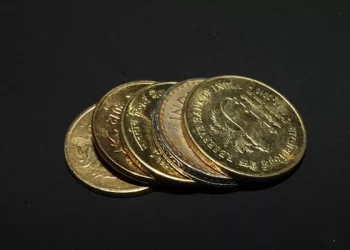Also known as spot trading or current trading, refers to the transaction after the transaction, the two sides of the transaction in the same day or two trading days for delivery procedures of a trading behavior.
Spot transaction is one of the most commonly used transaction methods, which accounts for most of the total foreign exchange transactions.
The main reason is that spot foreign exchange trading can not only meet the buyers’ temporary payment needs, but also help the buyers and sellers adjust the ratio to avoid risks.
The DIFFERENCE WITH SPOT foreign EXCHANGE transaction is the foreign exchange transaction THAT refers to the market transaction subject after the transaction, in accordance with the provisions of the forward contract, in the future (generally after 3 business days after the transaction date) according to the prescribed date.
Forward exchange is an essential component of an effective foreign exchange market.
In the early 1970s, the international system changed from the main orientation to the floating exchange rate, the exchange rate fluctuation increased, and the financial market developed vigorously, thus promoting the development of the forward foreign exchange market.
With the development of futures trading market, currency (foreign exchange), which used to be the medium of commodity trading, has also become the object of futures trading.
Foreign EXCHANGE FUTURES TRADING refers TO THE TRADING ACTIVITY BETWEEN BUYERS AND SELLERS OF FOREIGN EXCHANGE AT A FUTURE time (a future date) to buy or sell a standard amount of a specific currency at a price set by an open outcry (similar to AN auction) in an organized exchange.
Here again, there are several concepts that the reader may be a little vague, explained as follows: A. Standard quantity: the quantity of each futures trading contract in a particular currency (e.g.) is the same, for example, the value of each futures trading contract in sterling is 25,000 pounds.
B. Specific currency: refers to the specific type of currency of transaction specified in the terms of the contract, such as 3-month currency, 6-month currency, etc.
Foreign exchange options are often seen as an effective hedge because they eliminate the risk of depreciation to preserve the potential for profit.
Above we introduced forward transactions, where the delivery of foreign exchange can be on a specific date (e.g., May 1) or over a specific period (e.g., May 1 to May 31).
In both cases, however, the parties are obligated to complete the settlement in full.
A FOREIGN EXCHANGE OPTION IS A TRANSACTION IN WHICH ONE PARTY (THE HOLDER OF THE OPTION) HAS THE RIGHT TO A CONTRACT AND CAN DECIDE WHETHER OR NOT TO EXECUTE IT.
If SO desired, THE BUYER (HOLDER) OF THE CONTRACT may allow THE OPTION TO EXPIRE without CLOSING.
The seller has no right to decide whether the contract will be closed or not.
Two bright spots could sway markets this week: G7 countries will jointly announce a ban on Russian gold imports and Iran nuclear talks will resume.
Please pay attention to the specific operation, the market is changing rapidly, investment needs to be cautious, the operation strategy is for reference only.
























